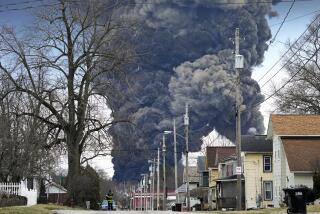State will consider new bullet train route through Bakersfield

Bakersfield settled an environmental lawsuit against the bullet train project on Friday, winning a concession by the state to consider a new rail route into the city’s downtown.
The city — along with Kern County; Shafter, Calif.; a hospital; a church and a developer — objected to the original route and other conditions that were certified by the California High-Speed Rail Authority in its federal and state environmental documents.
The Bakersfield route is among the more contentious urban transits in the Central Valley section of the high-speed rail project, affecting dozens of businesses, a major medical center and the city’s main high school campus.
Under the settlement, the city and the state will examine a new route that travels through the northern section of Bakersfield, arriving at a downtown station a few miles from the existing Amtrak station, Deputy City Atty. Andrew Heglund said.
The rail authority said the settlement “demonstrates the commitment between both parties to work together.”
The settlement was not related to a key decision by the federal Surface Transportation Board late last week that exempted the project from compliance with the California Environmental Quality Act, according to rail authority spokeswoman Lisa Marie Alley.
“Discussions have been ongoing since the summer and have resulted in the agreement,” she said.
But the ruling could affect future lawsuits and possibly existing ones. The authority had asked the transportation board, which regulates rail projects in the nation, to exempt the project from any work stoppage under a court-ordered injunction. It did not request an exemption from CEQA entirely. But the board went beyond the request and asserted that the project falls under federal authority and that the National Environmental Policy Act applied, rather than the state law.
Heglund noted that California’s legal requirements are more stringent than the federal ones. If the board’s decision stands up to expected legal challenges, it would likely limit the ability of parties affected by the rail project to contest environmental impact statement decisions, he added. Those impact statements are the primary legal means for the authority to determine the routes and station locations.
The 16-page transportation board ruling found that applying California state law to the project would “constitute an attempt by a state to regulate a matter directly regulated by the board.” The board’s two members appointed by President Obama, Daniel Elliott III and Deb Miller, voted for the decision. Ann Begeman, a Republican, voted against it, saying the decision was part of pattern of failing to provide review and oversight of the project.
More to Read
Start your day right
Sign up for Essential California for news, features and recommendations from the L.A. Times and beyond in your inbox six days a week.
You may occasionally receive promotional content from the Los Angeles Times.







